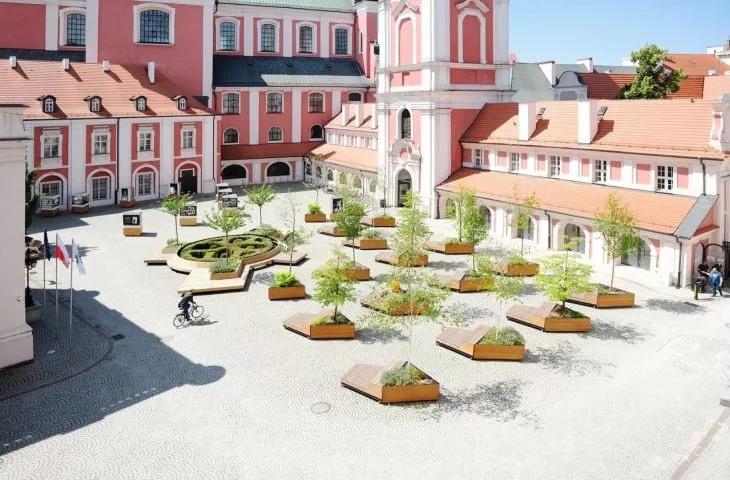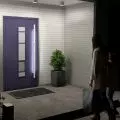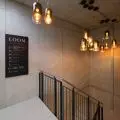How to revitalize a historic building complex? Architects from the Atelier Starzak Strebicki studio answer this question. Thanks to their design, the Poznań City Hall located in the former Jesuit monastery has become an open, friendly and multifunctional public space.
ThePoznań City Hall at Kolegiacki Square is located in a complex of buildings of the former Jesuit monastery - built in the early 17th century. In the post-war years, mainly during the communist era and after the fall of the Berlin Wall, only isolated and urgent repair and renovation works were carried out on the buildings. It was not until 2014 that the building complex began to open up to Poznan residents and tourists, taking full advantage of the hidden potential of its historic buildings, thanks to architects from the Atelier Starzak Strebicki studio. Their project is a gradual revitalization of the building complex, carried out since 2015. The redevelopment process was carried out in several stages. The first was the transformation of the parking lot occupying the City Hall's courtyard space and the creation of a meeting place for residents through a system of multifunctional urban furniture designed in 2016.
design stages
© Atelier Starzak Strebicki
The architects then moved on to the design for the reconstruction of the historic Building C, which encloses the courtyard on the north side. Building C, which previously housed the Municipal Police and served mainly administrative functions. Thanks to the reconstruction, the office building complex was given a second life - it became an open, welcoming and multifunctional public space. The space of the first floor, which fulfilled an office function - the headquarters of the Poznań Local Tourist Organization - gained spaciousness thanks to demolition, thus providing improved working comfort. All levels were connected by a new common staircase made of cast-in-place concrete. It replaced two separate staircases, making moving around the building easier and more comfortable. The basement has also been rebuilt, with locker rooms and showers for people who come to work on bicycles, as well as additional toilets.
The interiors of Poznań City Hall in a new version
Photo: Danil Danieluk © Atelier Starzak Strebicki
The official opening of the building was scheduled for May 1, 2020, but unfortunately the outbreak of the pandemic thwarted these plans. Since March, the first floor of Building C has been supporting infrastructure in the fight against the coronavirus, and in late June and early July the space served as the headquarters of the unit responsible for organizing the presidential elections. Currently, the building is used as the space of the Residents' Service Office of the Department of Urban Planning and Architecture and the Office of the Municipal Historic Preservation Officer.
first floor plan of the Poznan City Hall
© Atelier Starzak Strebicki
Dobrawa Bies: What does design work look like in historic spaces? Does it involve significant limitations, for example, when it comes to the choice of materials?
Atelier Starzak Strebicki: We started the whole process with a thorough analysis of the existing situation and a study of the building's history. This helped us in the design and gave us the opportunity to try to read the previous assumptions and ambitions related to the character and function of this building. From our perspective, it's a very intriguing challenge to have the chance to update/update a historic building and adapt it to a new program and new challenges. Often historic buildings, are in some puzzling way very flexible and easy to modify.
On the first floor it was decided to lay an oak floor
Photo: Danil Danieluk © Atelier Starzak Strebicki
Dobrawa Bies: Was it easy to convince investors of the project? It involved considerable demolition.
Atelier Starzak Strebicki: In this case, we wrote the program for the building together with the investor in the first phase. From our joint analysis and discussions, it was clear that such a strategically located building must act as an open interior to the public in the future. Hence, it was not necessary to convince the investor to demolish the building.
The interiors are dominated by grays, whites and muted greens
Photo: Danil Danieluk © Atelier Starzak Strebicki
Dobrawa Bies: Please tell us about the colors, accents and materials used.
Atelier Starzak Strebicki: We often like to work with colors. This time, the color range of the building is subdued and suits its representative function. Grays , whites and muted greens predominate.
An important highlight of the project was the use of semi-circular doors, which, when opened, seamlessly connect the interior space of the first floor of the building with the exterior space of the courtyard. This allows the two spaces to intermingle and brings out new spatial values and creates new possible scenarios of use.
Selected, natural and noble materials have been used in the implementation of the project. The new staircase, which connects all levels of Building C, was made of cast-in-place concrete. The corridor and common spaces in the basement were finished with brick tiles. Stoneware tiles were used in the first floor space and in the arrangement of the bathrooms, while on the first floor it was decided to lay oak flooring. The entire design is complemented by furniture covered with oak veneer.
The architects opted for natural and noble materials
Photo: Danil Danieluk © Atelier Starzak Strebicki
Dobrawa Bies: How to wisely combine "new" with "old" so as not to create dissonance?
Atelier Starzak Strebicki: In our case, certainly the use of materials corresponding to the historical past of the place allowed us to avoid dissonance between the new and the old. The aforementioned materials were carefully selected so that they complemented the historic character of the building with their appearance. One of the most difficult tasks was to find technical solutions for the new installations. It was quite simple in the case of heating - here it was possible to use underfloor heating on all floors (only in some rooms radiators had to be added, as a supplement). On the other hand, a difficult challenge was the implementation of mechanical ventilation without visual interference in the spaces of the ground and first floors. For this, we used old chimneys and spaces between vaults and roofs and floors. The mechanical ventilation is only left in view in the basement space, where also the newly placed functions are less representative and more technical in nature.
Dobrawa: Thank you for the interview!









































































